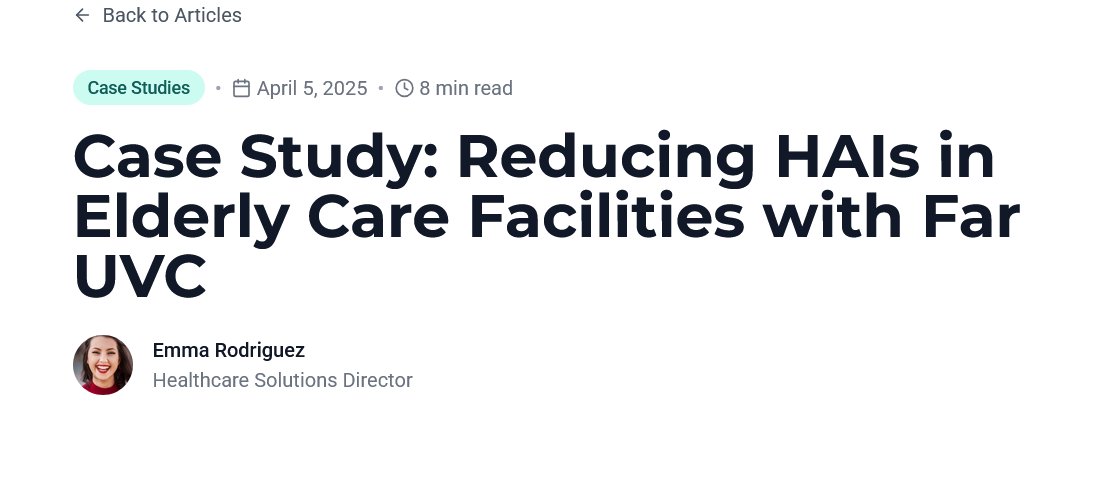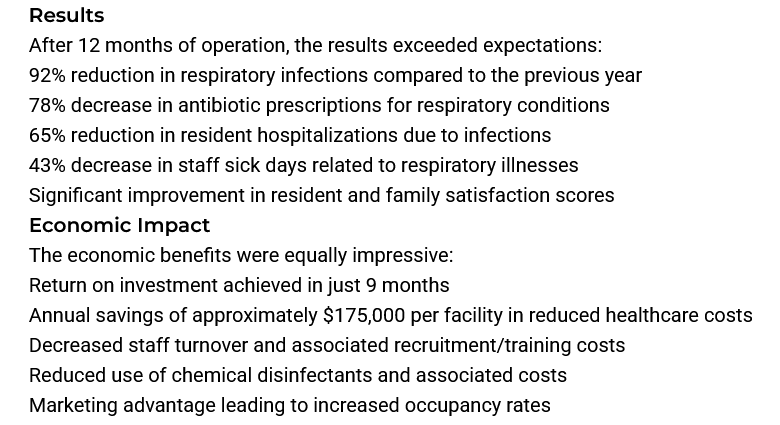I'm returning to this real world example of Far-UVC deployment because the results are *so astonishing*.
A 92% ⬇️in respiratory infections across 3 aged care facilities is just utterly massive.
That’s the effective elimination of all respiratory illness.
ecobay-tech.com/blog/case-stud…
A 92% ⬇️in respiratory infections across 3 aged care facilities is just utterly massive.
That’s the effective elimination of all respiratory illness.
ecobay-tech.com/blog/case-stud…

Importantly, the Far-UVC systems comprehensively covered each site, and the benefits went way beyond residents health.
A big ⬇️in staff sickness , more efficient cleaning and a ⬆️demand for places meant the investment was repaid
in 9 months!!
$175,000 annual saving *per site*.
A big ⬇️in staff sickness , more efficient cleaning and a ⬆️demand for places meant the investment was repaid
in 9 months!!
$175,000 annual saving *per site*.

The company is now rolling out Far-UVC to *all* their homes over the next 18 months.
I talk about Far-UVC not because I think it will replace all public health/medicines, but because it is largely overlooked & misunderstood by so many.
It will have a huge impact on society.
I talk about Far-UVC not because I think it will replace all public health/medicines, but because it is largely overlooked & misunderstood by so many.
It will have a huge impact on society.

• • •
Missing some Tweet in this thread? You can try to
force a refresh





